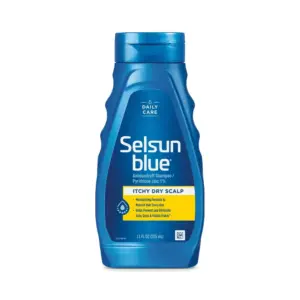Before diving into treatment options, it’s crucial to understand what a yeast infection is and what causes it. A yeast infection, also known as candidiasis, is a fungal infection typically caused by an overgrowth of Candida albicans. This fungus naturally resides in the body but can multiply and lead to infection under certain conditions.
Yeast infections can be triggered by a variety of factors, such as hormonal changes, antibiotic use, or a compromised immune system. Hormonal fluctuations during pregnancy, menstruation, or menopause can create an environment conducive to yeast overgrowth. Antibiotics, while targeting harmful bacteria, can also disrupt the natural balance of microorganisms, allowing yeast to thrive. Additionally, conditions like diabetes or immune deficiencies can increase susceptibility to infections.
Candida albicans is a type of yeast that is part of the natural flora of the mouth, throat, gut, and vagina. Under normal circumstances, it coexists peacefully with other bacteria. However, when conditions are favorable, it can multiply rapidly, leading to an infection. This overgrowth can cause inflammation and discomfort, manifesting as the symptoms typically associated with yeast infections.
Common symptoms include itching, burning, and a thick, white discharge. While these infections are not typically serious, they can be uncomfortable and persistent if not treated properly. The itching often starts as mild but can escalate, causing significant discomfort, especially during physical activities. Burning sensations are most noticeable during urination or intercourse, adding to the distress caused by the infection. The discharge, often described as cottage cheese-like, is another distinctive symptom that should not be ignored.
Antifungal creams are a popular choice for treating yeast infections due to their ease of application and effectiveness. These creams work by attacking the cell walls of the fungus, preventing it from growing and spreading. This type of topical antifungal treatment is directly applied to the affected area, which can lead to faster relief of symptoms compared to oral medications.
- Direct Application: By applying directly to the affected area, creams can quickly soothe irritation and reduce symptoms. The localized treatment ensures that the medication reaches the source of infection, minimizing the time needed for relief.
- Fewer Side Effects: Topical treatments usually have fewer side effects compared to oral medications. Unlike oral antifungals, which can affect the entire body, creams focus their action locally, reducing the risk of systemic side effects such as liver damage or gastrointestinal issues.
- Over-the-Counter Availability: Many antifungal creams are available without a prescription, making them accessible and convenient. This accessibility allows individuals to address symptoms promptly, potentially reducing the duration and severity of the infection.
- Convenience and Privacy: The ease of obtaining and applying these creams at home offers a level of privacy and comfort that is often preferred by those experiencing this sensitive condition. There’s no need for a doctor’s visit or prescription, making it a practical option for many.
- Cost-Effectiveness: Over-the-counter antifungal creams are generally affordable, making them a cost-effective solution for managing yeast infections. This affordability ensures that effective treatment is available to a wider audience, regardless of financial constraints.
There are several effective antifungal creams available for treating yeast infections. Here, we’ll discuss some of the top options and what makes them effective.
Clotrimazole is a widely used antifungal medication for yeast infections. Known for its effectiveness, it disrupts the cell membrane of the fungus, leading to its death.

- How to Use: Apply a thin layer to the affected area twice daily for up to two weeks or as directed by a healthcare provider. Consistent application is key to ensuring the infection is fully eradicated.
- Pros: Easily accessible, with a long history of use and effectiveness. Its reliability and safety profile make it a go-to option for many.
- Cons: May cause mild irritation in sensitive individuals. It’s important to discontinue use and consult a healthcare provider if irritation persists.
Another popular choice, miconazole works similarly to clotrimazole by inhibiting the growth of fungi. This yeast infection cream is often recommended for its rapid action.
- How to Use: Apply once or twice daily, following the instructions on the packaging or as advised by a healthcare professional. Adherence to the recommended usage ensures optimal results.
- Pros: Known for providing quick relief from symptoms. Its fast-acting formula is ideal for those seeking immediate comfort.
- Cons: Some users may experience mild burning or irritation. Monitoring the skin’s reaction is important to avoid prolonged discomfort.
Tioconazole is a potent antifungal ointment that offers a one-dose treatment for yeast infections. Its concentrated formula ensures maximum effectiveness.
- How to Use: Typically, a single application is sufficient. Follow the instructions provided with the product. The simplicity of a one-time application makes it a convenient choice.
- Pros: Convenient single-dose application. This option is perfect for those with busy schedules or those who prefer minimal intervention.
- Cons: May not be suitable for severe infections needing prolonged treatment. For more persistent cases, additional medical consultation may be necessary.
Butoconazole is another effective antifungal cream that offers a short-duration treatment. Its effectiveness in a short span is appealing to many users.
- How to Use: Typically used as a single dose, applied at bedtime for convenience and effectiveness. Nighttime application allows the cream to work uninterrupted.
- Pros: Short treatment duration with effective results. Its rapid action is beneficial for those seeking quick resolution.
- Cons: Not suitable for individuals allergic to its components. Careful examination of ingredients is advised for those with known sensitivities.
Terconazole is a prescription-strength cream that is often recommended for more stubborn infections.
- How to Use: Apply as prescribed by a healthcare provider, often once daily for a set number of days. Following medical guidance ensures the most effective treatment.
- Pros: Effective against resistant strains of yeast. Its strength makes it a valuable option for challenging cases.
- Cons: Requires a prescription, which may necessitate a doctor’s visit. The need for prescription can delay immediate treatment.
When selecting an antifungal treatment, consider factors such as the severity of your symptoms, any previous reactions to medications, and personal preferences regarding application. It’s also essential to read and follow the instructions on the product packaging or consult a healthcare provider if you’re unsure.
Assessing the intensity of your symptoms is crucial in determining the appropriate treatment. Mild infections might respond well to over-the-counter options, while more severe cases could require prescription-strength solutions.
If you have a history of allergies or sensitivities to certain medications, it’s vital to choose a cream that aligns with your needs. Checking the ingredient list can prevent adverse reactions.
Your daily routine and personal preferences should influence your choice of treatment. Whether you prefer a single-dose application or a treatment spread over several days, select a product that fits seamlessly into your lifestyle.
While most yeast infections can be effectively treated with over-the-counter antifungal creams, there are situations where medical advice is necessary:
- Persistent Symptoms: If symptoms persist after treatment or recur frequently, consult a healthcare professional. Persistent infections might indicate underlying health issues that need attention.
- Severe Symptoms: For severe infections causing significant discomfort or affecting daily activities, seek medical advice. Immediate medical intervention can prevent complications.
- Pregnancy: If you are pregnant, consult your healthcare provider before using any medication, including topical antifungals. Ensuring the safety of both mother and baby is paramount.
In addition to using antifungal treatments, adopting certain habits can help prevent yeast infections:
Keep the genital area clean and dry. Avoid using scented products that can disrupt the natural balance of bacteria and yeast. Regular washing with mild soap and water is sufficient to maintain hygiene without irritating the skin.
Choose cotton underwear and loose-fitting clothing to reduce moisture buildup. Breathable fabrics allow air circulation, which helps keep the area dry and less conducive to yeast growth.
A balanced diet and regular exercise support a healthy immune system, reducing the likelihood of infections. Incorporating probiotics into your diet can also promote a healthy balance of bacteria and yeast.
Steer clear of douches, scented sanitary products, and harsh soaps that can disrupt the vaginal flora. Opt for natural or hypoallergenic products to minimize irritation.
High stress levels can weaken the immune system, making you more susceptible to infections. Techniques such as yoga, meditation, or regular exercise can help manage stress effectively.
Yeast infections can be uncomfortable, but with the right antifungal cream, relief is within reach. By understanding the options available and choosing the best treatment for your needs, you can effectively manage and overcome this common issue. Remember, if you’re ever unsure about your symptoms or treatment plan, it’s always best to consult a healthcare professional. Taking proactive steps in prevention and treatment ensures a healthier, more comfortable life.





